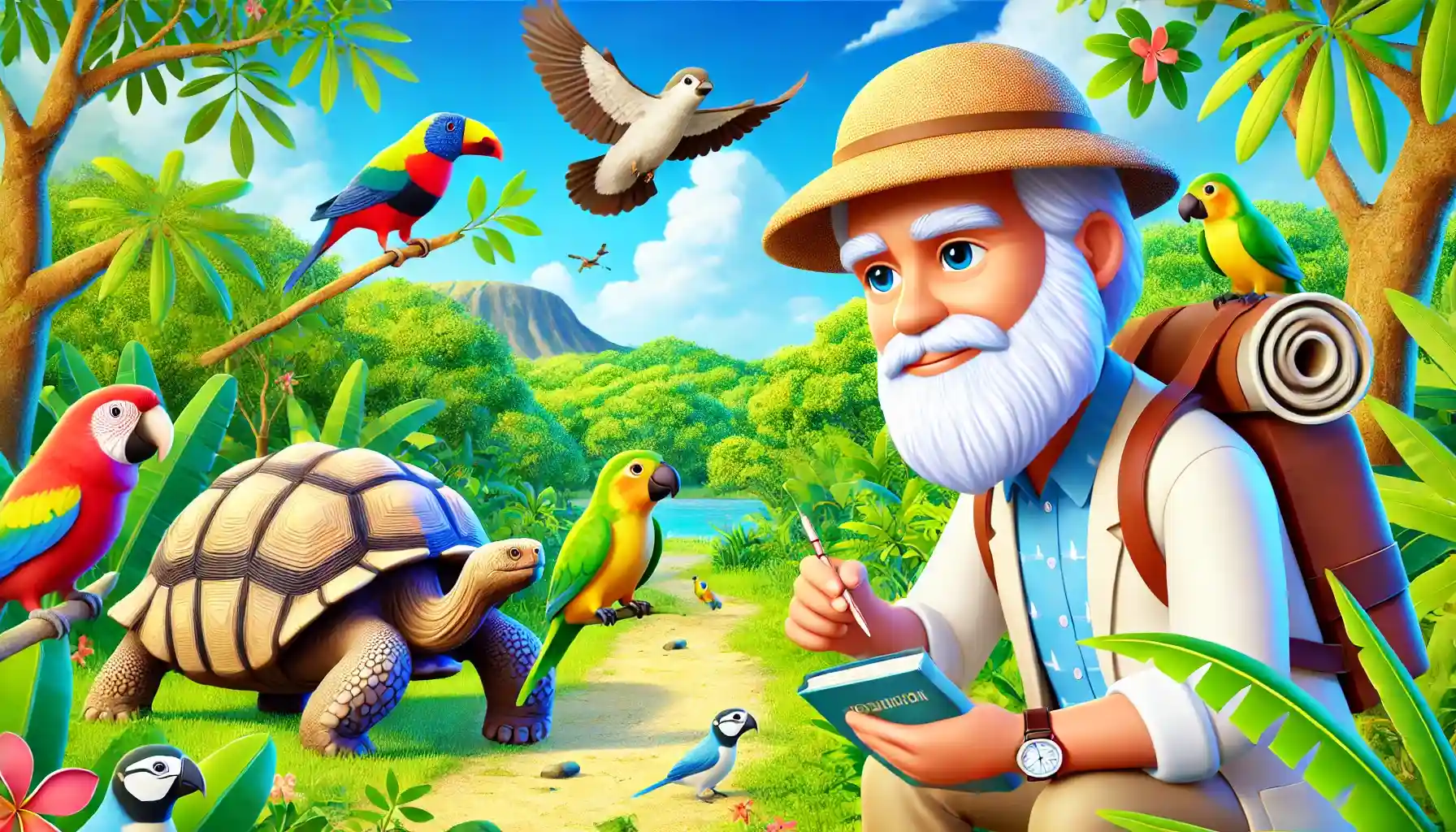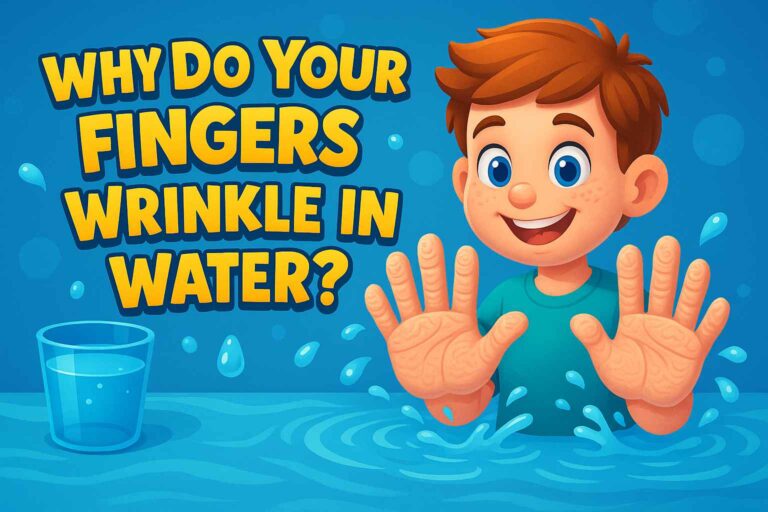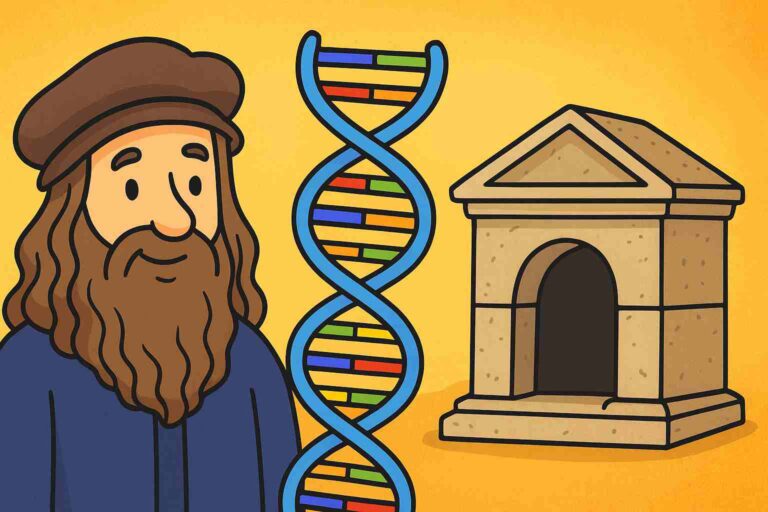
A long time ago, there was a curious boy named Charles Darwin who loved exploring nature. He wasn’t the best student in school, but he was always fascinated by animals, plants, and fossils. Little did he know that one day, his discoveries would change the way we understand life on Earth!
🏝 The Adventure That Changed Everything
When Charles Darwin was 22 years old, he got an amazing opportunity—to travel around the world on a ship called HMS Beagle. This journey lasted five years and took him to many different places, but the most exciting stop was the Galápagos Islands.
On these islands, Darwin saw something very interesting—the same type of animals looked different on each island! For example, he noticed that finches (a type of bird) had different beak shapes depending on what they ate. Some had long, thin beaks for eating insects, while others had strong, thick beaks for cracking seeds.
Darwin wondered, Why do these birds look different if they are all finches? This question led him to a BIG discovery!
🌱 Darwin’s Big Idea: Evolution and Natural Selection
After years of studying animals and plants, Darwin came up with a groundbreaking idea called evolution by natural selection. Here’s how it works:
🔹 Animals and plants change slowly over many generations to survive better in their environment.
🔹 The ones with the best features (like a strong beak or fast legs) survive and have babies.
🔹 Over time, these helpful traits get passed on, and the species slowly changes.
This idea was shocking at the time because most people believed that all living things had stayed the same since they were created. But Darwin’s research proved that life on Earth is always changing!
📖 The Book That Changed Science
In 1859, Darwin published a famous book called “On the Origin of Species.” It explained his idea of natural selection and showed how animals and plants evolve over time. His book changed biology forever and helped scientists understand how all living things are connected!
🧐 DO YOU KNOW? Fun Facts About Darwin!
💡 Darwin didn’t start out as a scientist! He studied medicine but didn’t like it, so he switched to studying nature.
💡 He loved collecting bugs! As a boy, Darwin collected beetles and even found a rare one that excited scientists.
💡 He was seasick! Even though he traveled on a ship for five years, Darwin often felt sick on the rocking boat!
💡 Darwin almost didn’t publish his theory! He was afraid people wouldn’t believe him, but another scientist, Alfred Wallace, had a similar idea, so Darwin finally shared his work.
🐢 Darwin and the 100-Year-Old Tortoise
On the Galápagos Islands, Darwin met a giant tortoise that was over 100 years old! These tortoises were so big that sailors used them for food, but Darwin saw them as important clues about evolution. Each island’s tortoises had different shell shapes that helped them survive in their unique environments.
Darwin’s studies of these tortoises helped him develop his theory of evolution, proving that animals adapt to their surroundings over time.
🔬 Why Is Darwin Important Today?
Darwin’s discoveries helped scientists understand how life changes and why animals look and behave the way they do. His work still influences modern science, medicine, and conservation!
Next time you see a bird, a butterfly, or even your pet, remember—they have all evolved over millions of years, just like Darwin discovered! 🦜🔍
🧠 QUIZ: How Much Do You Know About Charles Darwin?
Test your knowledge with these fun questions!
1️⃣ What was the name of the ship Charles Darwin traveled on?
A) The Discovery
B) HMS Beagle
C) The Evolution
2️⃣ Where did Darwin find the famous finches that helped him develop his theory?
A) Hawaii
B) The Galápagos Islands
C) The Amazon Rainforest
3️⃣ What did Darwin notice about the finches on different islands?
A) They had different colors
B) They sang different songs
C) They had different beak shapes
4️⃣ What is the name of Darwin’s famous book about evolution?
A) The Story of Animals
B) On the Origin of Species
C) Natural Science for Kids
🟢 Answers: 1️⃣ B, 2️⃣ B, 3️⃣ C, 4️⃣ B
📊 POLL: If You Could Discover a New Animal, What Would It Be?
Darwin loved studying animals! If you were a scientist like him, what type of new creature would you want to find?
🦜 A) A never-before-seen bird
🦕 B) A dinosaur that still exists
🐠 C) A glowing ocean creature
🦄 D) A real-life unicorn
(Kids can vote and discuss why they chose their favorite!)
🧩 RIDDLE: Who Am I?
I have a strong shell and can live for over 100 years.
Darwin studied me on an island where I move very slow.
Who am I?
(Answer: A Galápagos Tortoise! 🐢)






